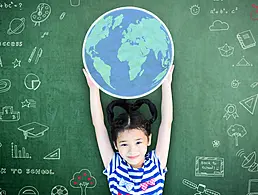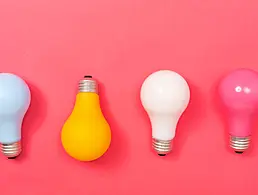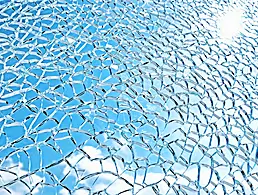While the number of female scientists on screen is a little low for our liking, there are still some impressive STEM role models in film.
Being a woman in science, technology, engineering or maths (STEM) brings with it its own unique set of challenges.
Women have to contend with pay gaps, sexual harassment and difficult workplace culture, not to mention a long and sad history of pseudoscientific gender essentialism, which has been used to justify inequality and even death threats, as seen in #Gamergate.
Representation of women in film and television in general is paltry at best. A study commissioned by the Geena Davis Institute in 2008 found that for every one woman on screen, there are at least 2.5 men. It also found that women only make up 17pc of crowd shots.
The representation of women in STEM is even more woeful.
A more recent study by the same institute found that women will turn off a film or TV show if they feel too stereotyped or underrepresented. To save you the exhaustive process, we have compiled a list of some of the greatest female STEM role models in film that won’t have you reaching for the off button.
Dr Erin Mears, Contagion
The 2011 Steven Soderbergh film Contagion has been lauded as a well-researched and well-constructed project, packed with accurate (albeit basic) science and realistic portrayals of the working life of those working in disease control.
In her role as Dr Erin Mears, Kate Winslet portrays a meticulous and driven epidemic intelligence service officer who works with the CDC.
She always remains a consummate professional, despite having to deal with patience-testing encounters with condescending department of health representatives and politicians, who are more concerned with the impact an epidemic could have on Black Friday sales than on the potential deadly outbreak itself.
Her tireless work to save the lives of those around her, and her incredible knowledge and general devotion to science, make her the perfect on-screen role model for the women of STEM.
Dr Ryan Stone, Gravity
Dr Ryan Stone, Sandra Bullock’s character in the epic intergalactic feature Gravity, isn’t technically an astronaut, amazingly. She’s a biomedical engineer who develops groundbreaking medical imaging technology, which has been approved for use in the Hubble Space Telescope. She embarks on her first mission to space to help service the device, along with veteran astronaut Matt Kowalski.
When disaster strikes and a cloud of space debris threatens Stone and Kowalski and separates the two, she spends most of the film relying on her own intelligence and ingenuity to get herself out of a potentially lethal situation. Not only is she a leader and innovator in her field, she’s able to adapt to the new challenges of her situation, making her someone definitely worth aspiring to.
Ellie Arroway, Contact
Based on the novel by renowned American astronomer Carl Sagan, Contact is a 1997 film about the search for extraterrestrial intelligence, starring Jodie Foster. Foster portrays Ellie Arroway, a scientist who is steadfast in her belief that we are not alone in this vast universe.
Her single-minded search for alien life is fruitful but, along the way, Arroway has to contend with many challenges facing real-life scientists, such as funding crises and criticism from within the scientific community. She also finds herself wading into the science-versus-religion debate when her discoveries cause believers to question everything they know.
Arroway’s ability to make massive discoveries and weather the storm that comes with the process of revealing new knowledge clearly distinguishes her as a great STEM role model.
Abby Yates, Ghostbusters (2016)
It is, in a way, unfair to single out Abby Yates (played by Melissa McCarthy) when the entire Ghostbusters team could easily be nominated, but her devotion to revealing the truth about paranormal activity never wavers, even in the face of mounting scepticism and ridicule. It is she who draws Dr Erin Gilbert (Kristen Wiig) back to ghostbusting after a period serving as a professor in Columbia.
The fact that we can now say there is an all-female team of scientists depicted in film is a feat in itself, and any budding (or current) female scientist will definitely find the sight of the all-woman outfit defending New York City encouraging.
Murphy ‘Murph’ Cooper, Interstellar
Played by Mackenzie Foy, Jessica Chastain and Ellen Burstyn, Murphy Cooper’s interest in science was inspired at a young age by her NASA pilot father – but this is not to say that her achievements are not her own. Her curiosity about the world, fastidiousness and willingness to stand up a to NASA director when she identifies flaws in his gravity equation make her everything a woman in STEM should emulate.
Ellie Sattler, Jurassic Park
Laura Dern’s Ellie Sattler is a palaeobotanist called to inspect Jurassic Park. She astutely recognises that the creators have not paid much heed to the flora and fauna sprouting around the park, and that an ailing stegosaurus has been ingesting toxic berries.
Her scientific acumen is compounded by her incredible bravery and composure in the face of dinosaur-related disaster. She helps tend to Ian Malcom’s (Jeff Goldblum) injuries and risks her life to lure velociraptors away from the Safari Lodge.
She even stalls leaving the island to document which dinosaurs are still alive in Jurassic Park. While we don’t recommend almost dying in the pursuit of knowledge, we can certainly recommend Sattler as a role model.
The women of Hidden Figures
It’s impossible to have a preference for one of the women in Hidden Figures over the others, so we picked three.
Hidden Figures is distinct in that it is a biographical drama, as opposed to science fiction. As real mathematicians who worked for NASA, Katherine Johnson (Taraji P Henson), Dorothy Vaughan (Octavia Spencer) and Mary Jackson (Janelle Monáe) were instrumental to the American Space Race.
Vaughan programmed computers (which took over a lot of NASA’s calculation tasks), Jackson joined NASA as an engineer after an arduous battle to be allowed to study engineering, and Johnson calculated the trajectories of Apollo 11 and the Space Shuttle missions.
They did so while dealing with the rampant structural racism and misogyny at the time, which attempted to limit them at every turn.
They should have never had to face those kinds of obstacles in the first place, but the fact that these women persevered in spite of it all makes them the ultimate female role models in STEM.




